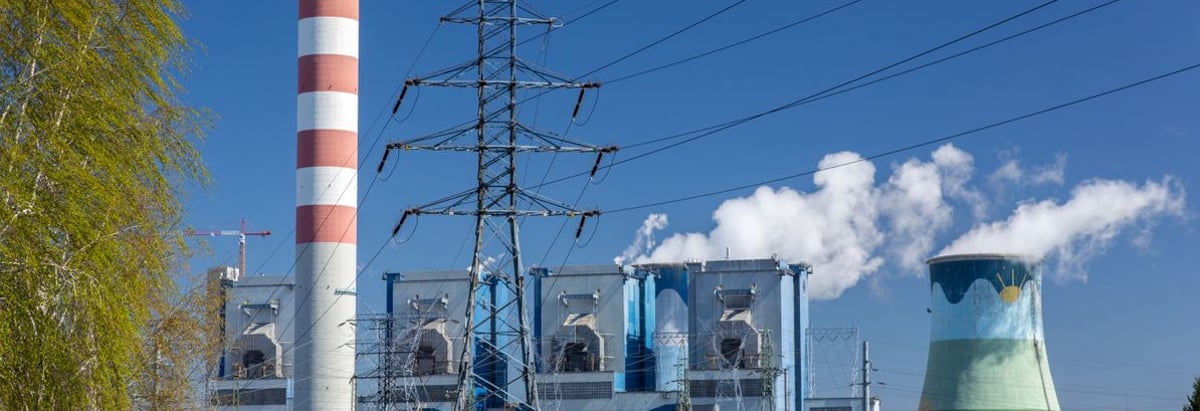Stock Analysis
- Malaysia
- /
- Renewable Energy
- /
- KLSE:MALAKOF
Malakoff Corporation Berhad's (KLSE:MALAKOF) Returns On Capital Tell Us There Is Reason To Feel Uneasy

When it comes to investing, there are some useful financial metrics that can warn us when a business is potentially in trouble. A business that's potentially in decline often shows two trends, a return on capital employed (ROCE) that's declining, and a base of capital employed that's also declining. Basically the company is earning less on its investments and it is also reducing its total assets. And from a first read, things don't look too good at Malakoff Corporation Berhad (KLSE:MALAKOF), so let's see why.
Return On Capital Employed (ROCE): What Is It?
For those who don't know, ROCE is a measure of a company's yearly pre-tax profit (its return), relative to the capital employed in the business. The formula for this calculation on Malakoff Corporation Berhad is:
Return on Capital Employed = Earnings Before Interest and Tax (EBIT) ÷ (Total Assets - Current Liabilities)
0.0016 = RM27m ÷ (RM20b - RM3.1b) (Based on the trailing twelve months to March 2024).
Thus, Malakoff Corporation Berhad has an ROCE of 0.2%. In absolute terms, that's a low return and it also under-performs the Renewable Energy industry average of 6.6%.
Check out our latest analysis for Malakoff Corporation Berhad
In the above chart we have measured Malakoff Corporation Berhad's prior ROCE against its prior performance, but the future is arguably more important. If you'd like, you can check out the forecasts from the analysts covering Malakoff Corporation Berhad for free.
What Does the ROCE Trend For Malakoff Corporation Berhad Tell Us?
We are a bit anxious about the trends of ROCE at Malakoff Corporation Berhad. To be more specific, today's ROCE was 3.9% five years ago but has since fallen to 0.2%. On top of that, the business is utilizing 33% less capital within its operations. The combination of lower ROCE and less capital employed can indicate that a business is likely to be facing some competitive headwinds or seeing an erosion to its moat. Typically businesses that exhibit these characteristics aren't the ones that tend to multiply over the long term, because statistically speaking, they've already gone through the growth phase of their life cycle.
The Bottom Line
To see Malakoff Corporation Berhad reducing the capital employed in the business in tandem with diminishing returns, is concerning. In spite of that, the stock has delivered a 33% return to shareholders who held over the last five years. Regardless, we don't like the trends as they are and if they persist, we think you might find better investments elsewhere.
Malakoff Corporation Berhad does have some risks, we noticed 2 warning signs (and 1 which is concerning) we think you should know about.
For those who like to invest in solid companies, check out this free list of companies with solid balance sheets and high returns on equity.
New: Manage All Your Stock Portfolios in One Place
We've created the ultimate portfolio companion for stock investors, and it's free.
• Connect an unlimited number of Portfolios and see your total in one currency
• Be alerted to new Warning Signs or Risks via email or mobile
• Track the Fair Value of your stocks
Have feedback on this article? Concerned about the content? Get in touch with us directly. Alternatively, email editorial-team (at) simplywallst.com.
This article by Simply Wall St is general in nature. We provide commentary based on historical data and analyst forecasts only using an unbiased methodology and our articles are not intended to be financial advice. It does not constitute a recommendation to buy or sell any stock, and does not take account of your objectives, or your financial situation. We aim to bring you long-term focused analysis driven by fundamental data. Note that our analysis may not factor in the latest price-sensitive company announcements or qualitative material. Simply Wall St has no position in any stocks mentioned.
Have feedback on this article? Concerned about the content? Get in touch with us directly. Alternatively, email editorial-team@simplywallst.com
About KLSE:MALAKOF
Malakoff Corporation Berhad
An investment holding company, operates as an independent power production and supply, and environmental management company in Malaysia, Indonesia, and the Middle East.

